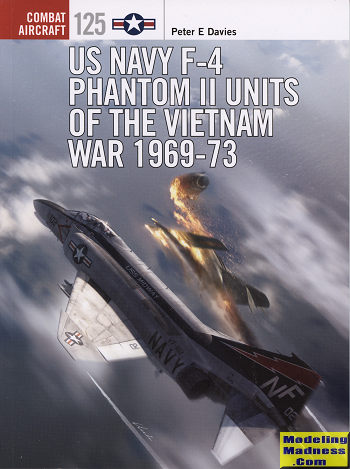 The
first air campaign against North Vietnam, Rolling Thunder, did not turn out as
well as was hoped by the US forces involved. Thanks as much to the meddling of
the politicians back in Washington, who felt they knew more than those in the
field, the operation did not cause the North Vietnamese to reduce their
aggression and it also resulted in a rather pathetic 'kill ratio' regarding the
number of US planes shot down vs the number of North Vietnamese. In fact,
it was pretty near 1:1.
The
first air campaign against North Vietnam, Rolling Thunder, did not turn out as
well as was hoped by the US forces involved. Thanks as much to the meddling of
the politicians back in Washington, who felt they knew more than those in the
field, the operation did not cause the North Vietnamese to reduce their
aggression and it also resulted in a rather pathetic 'kill ratio' regarding the
number of US planes shot down vs the number of North Vietnamese. In fact,
it was pretty near 1:1.
However, there were lessons learned. One is that Navy pilots needed a
greater amount of training to combat the air defenses. These were pilots who had
been trained to shoot down Soviet bombers, and not dogfight with the nimble
MiG-17. It resulted in the Navy Fighter Weapons School (Top Gun) where those who
had been successful passed on what they knew to others in what was, and still
is, a rather grueling course. Using T-38s and A-4s to simulate the Soviet MiG-17
and MiG-21, crews were taught the best way to fight in their Phantoms. It also
helped that there were a few of the real deal operating out of Groom Lake that
they could practice their skills against.
With a change in the White House, came a change in the way the war was
prosecuted. Commanders in the field were given a greater amount of freedom of
action. Still constrained in many ways, but not as much. The drawdown of US
forces also meant that a greater reliance was falling on the shoulders of the
air arms, particularly the US Navy, who could more quickly bring assets into the
theater, ready to fight. As the fighting ramped up, there were more and more
opportunities to fight MiGs. This was particularly true in 1971 and 1972 before
the start of Linebacker missions. It was during this time that all that training
started to pay dividends as the kill ration returned to what it was during the
Korean War.
In this book, the author covers the Navy's operations in various stages,
highlighting who did what during these periods of time. There are lots of
mission reports and I dare say that most, if not all the various victories are
covered. Every Navy west coast Phantom unit, other than the training squadrons,
participated. Even some from the Atlantic and a USMC squadron, got in on the
deal.
Thanks to the relatively recent events, there are a lot of photos of
planes, ships and the usual sweat-soaked pilots, grinning from their victories.
Not to be left out are a superb selection of full color profiles of the planes
involved. This was the colorful era of post WWII Naval aviation before the
planes were coated in greys. There are also several appendices that you will
find interesting making for a great book and one I know you'll want on your
shelves.
April 2018
Copyright ModelingMadness.com. All rights reserved.
For more on the complete line of Osprey books,
visit www.ospreypublishing.com
If you would like your product reviewed fairly and
fairly quickly, please
contact the editor or see other details in the
Note to
Contributors.
 The
first air campaign against North Vietnam, Rolling Thunder, did not turn out as
well as was hoped by the US forces involved. Thanks as much to the meddling of
the politicians back in Washington, who felt they knew more than those in the
field, the operation did not cause the North Vietnamese to reduce their
aggression and it also resulted in a rather pathetic 'kill ratio' regarding the
number of US planes shot down vs the number of North Vietnamese. In fact,
it was pretty near 1:1.
The
first air campaign against North Vietnam, Rolling Thunder, did not turn out as
well as was hoped by the US forces involved. Thanks as much to the meddling of
the politicians back in Washington, who felt they knew more than those in the
field, the operation did not cause the North Vietnamese to reduce their
aggression and it also resulted in a rather pathetic 'kill ratio' regarding the
number of US planes shot down vs the number of North Vietnamese. In fact,
it was pretty near 1:1.